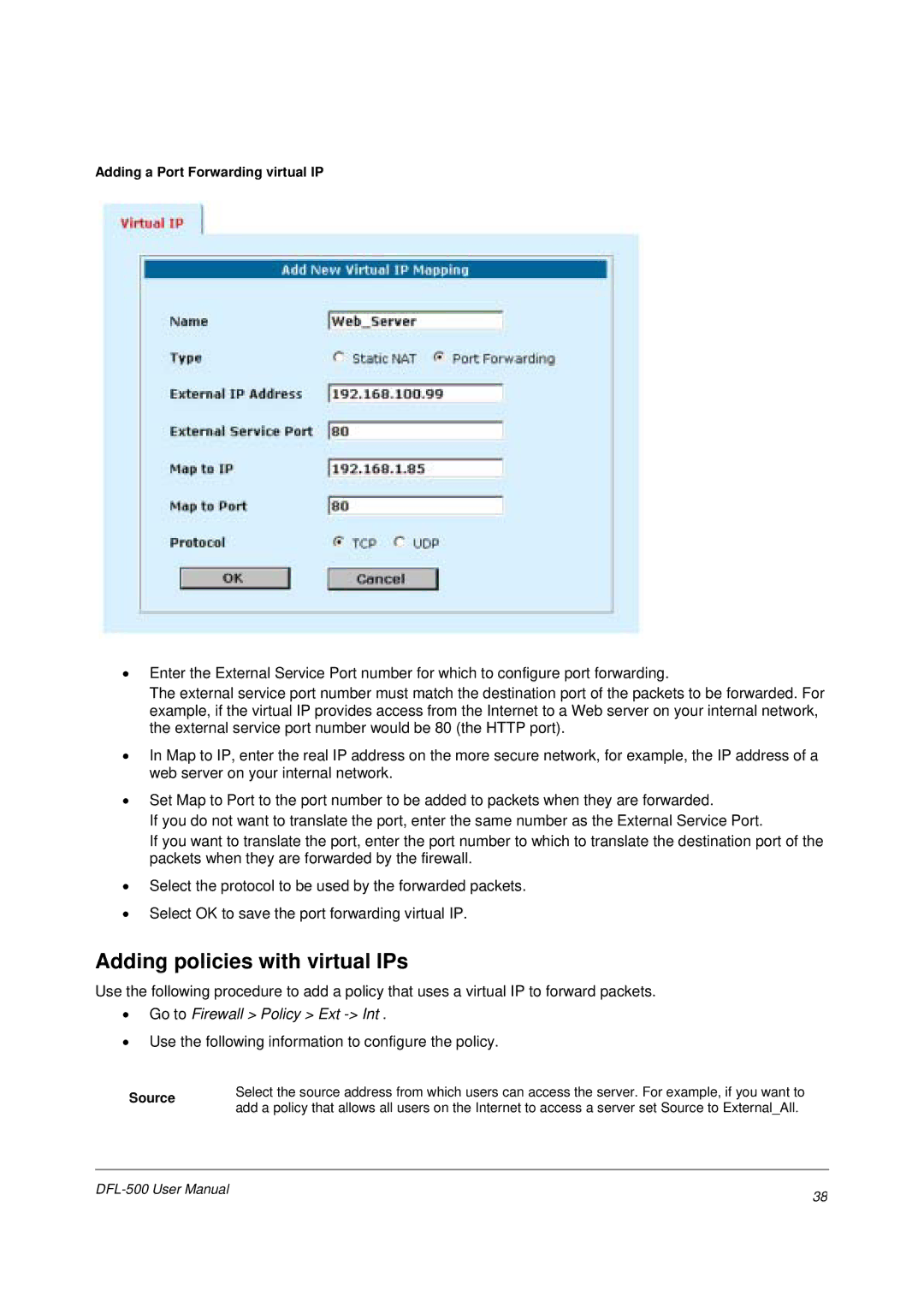
Adding a Port Forwarding virtual IP
•Enter the External Service Port number for which to configure port forwarding.
The external service port number must match the destination port of the packets to be forwarded. For example, if the virtual IP provides access from the Internet to a Web server on your internal network, the external service port number would be 80 (the HTTP port).
•In Map to IP, enter the real IP address on the more secure network, for example, the IP address of a web server on your internal network.
•Set Map to Port to the port number to be added to packets when they are forwarded.
If you do not want to translate the port, enter the same number as the External Service Port.
If you want to translate the port, enter the port number to which to translate the destination port of the packets when they are forwarded by the firewall.
•Select the protocol to be used by the forwarded packets.
•Select OK to save the port forwarding virtual IP.
Adding policies with virtual IPs
Use the following procedure to add a policy that uses a virtual IP to forward packets.
•Go to Firewall > Policy > Ext -> Int .
•Use the following information to configure the policy.
Source | Select the source address from which users can access the server. For example, if you want to | |
add a policy that allows all users on the Internet to access a server set Source to External_All. | ||
|
38 | |
|
